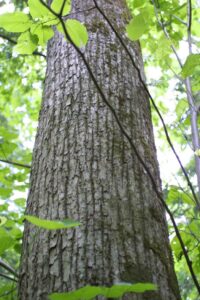Botanical Name:
Tilia americana
Family Name:
Tiliaceae / Linden
Description:
The American basswood aka the American linden, is a fast-growing tree that can live for 200 years. It is among the largest trees of eastern and central North America. It can be planted in urban areas or as a shade tree in residential areas so long as it has enough space. It is an important lumber species in the Great Lakes States.
Size:
60-80’
Habitat and Range:
The basswood is native to the north eastern part of the United States and some southeastern parts of Canada. It likes rich, wet soils and is often found growing along creeks and streams but will tolerate short periods of drought.
Attributes:
The American basswood is beautiful and large with an oval canopy mounted on a tall, straight trunk. In June, clusters of yellow blooms provide a delightful aroma that attracts bees and people. The resulting seeds are in a hard, dry, hairy, nutlike fruit. Summer produces heart shaped, thick, green leaves while winter stems and buds are bright red.
Wildlife Value:
The flowers of the basswood tree provide abundant nectar for insects. The seeds are eaten by chipmunks, mice, squirrels, and songbirds. Rabbits and voles eat the bark, and the leaves serve as food for various caterpillars. The wide canopy is also an excellent shelter for many critters.
Did you Know?
• The Basswood wood is very soft and light and is therefore one of the most suitable wood for hand carving.
• The Iroquois nation traditionally carved ceremonial masks from the sapwood of the tree, used the gummy inner bark for bandages, and wove rope from the dried fibers of the inner bark.
• Beekeepers may appreciate the strong-flavored nectar provided by the tree’s fragrant flowers.
Benefits to Our Community (based on carbon dioxide sequestered, storm water runoff avoided, and air pollution removed each year):
Over the next 15 years, this tree will give back $4,155 worth of benefits to our community.





